Samsung S85D is Samsung's entry-level OLED model for 2024, but it certainly doesn't feel "budget". From the very first contact, the TV demonstrated that OLED technology makes a difference. Deep blacks, excellent contrast, and great viewing angles make watching your favourite films and series pure pleasure, no matter where you sit. It's a screen that can truly immerse you in the action. The Tizen operating system is another strong point of Samsung S85D. It's simple, intuitive, and runs smoothly. Switching between apps like Netflix and YouTube takes a moment, and the ability to support AirPlay and Bluetooth provides plenty of options for connecting other devices. The solar remote not only doesn't need charging, but we also had no trouble using it to control the set-top box or soundbar – these are small details that make daily usage easier. Like any TV, S85D has its minor shortcomings. The lack of a recording feature can be noticeable, especially if we like to go back to our favourite shows or films. The absence of support for DTS soundtracks may require purchasing and directly connecting a Blu-ray to an external audio system. If we want to fully utilise this codec, it's worth keeping this in mind. SDR brightness, while sufficient in most cases, may not always meet expectations in brighter rooms. It's a TV that shows its best side in the evening – that's when the OLED black and contrast really impress. Despite these few drawbacks, S85D left us with very positive impressions. It’s a model that proves excellent picture quality and great technological solutions don't have to come with a high price tag. If we're looking for a TV that performs well in everyday use as well as during evening screenings without ruining our budget, then Samsung S85D OLED is a great choice. It's a device that gives the feeling that we've made a good investment, offering really a lot for a reasonable amount.
- Matching (Score)
- Our verdict
- TV appearance
- Where to buy
- Contrast and black detail
- HDR effect quality
- Factory color reproduction
- Color reproduction after calibration
- Smoothness of tonal transitions
- Image scaling and smoothness of tonal transitions
- Blur and motion smoothness
- Console compatibility and gaming features
- Input lag
- Compatibility with PC
- Viewing angles
- Daytime performance
- Panel details
- TV features
- Apps
- Playing files from USB
- Sound
Samsung S85D vs Panasonic W95B
Direct comparison
S85D


Panel type: WRGB OLED
Resolution: 3840x2160
System: Tizen
Model year: 2024
Complete the survey to find out the result

Panel type: LCD VA
Resolution: 3840x2160
System: Amazon FireTV
Model year: 2025
Complete the survey to find out the result

Overall rating
7.7
7.5
Movies and series in UHD quality
7.7
7.3
Classic TV, YouTube
8.5
7.4
Sports broadcasts (TV and apps)
8.4
7.2
Gaming on console
9.4
8.6
TV as a computer monitor
7.6
8.4
Watching in bright light
5.0
7.2
Utility functions
7.2
6.8
Apps
8.7
7.2
Sound quality
7.0
7.9
Complete the survey to find out what fits your preferences
Advantages
Outstanding contrast - OLED
Tizen system – fast and intuitive
Solar remote – control of other devices (e.g. decoder)
Excellent viewing angles – OLED
High motion fluidity – 120 Hz panel
Lots of functions for gamers
Unusual design
Price
Great blacks and contrast thanks to 504 local dimming zones and a VA panel
Very high HDR brightness (up to 1400 nits)
Good motion smoothness. 144 Hz panel – perfect for gaming and dynamic content
Support for Dolby Vision, HDR10+
Many features for gamers including: HGiG, ALLM, FreeSync and G-Sync
Low input lag
Well-functioning upscaling and subtle digital image processing
High brightness during the day and effective glare reduction
Pleasant sound with Dolby Atmos support
Ability to record to USB, Bluetooth and jack connection
Disadvantages
No recording feature from the built-in tuners
Average SDR brightness – 310 nits
No support for DTS audio tracks
Fire TV system poorly developed in Europe – lacks many applications
Clumsy interface operation and software bugs, e.g. lack of subtitles when playing movies from USB
Local dimming does not work in VRR mode
Narrow viewing angles – typical for VA panels
Only two HDMI 2.1 ports
Our verdict
Panasonic W95B is one of those televisions that not only impresses with its specifications on paper but also delights in practice. It features a fantastic Mini LED screen, offering excellent blacks, very high brightness, and smooth motion, which combined with refined local dimming creates an image close to perfection. Most content looks simply amazing on it, and the low latency game mode with support for key technologies makes it a good choice for gaming as well. However, it's important to remember that the W95B is aimed at a fairly specific group of users – those who are willing to accept weaker usability features in exchange for great picture quality. The Fire TV system in this version is not well refined: some apps are missing, certain functions operate clumsily, and the built-in file player does not even support subtitles. Despite these shortcomings, the Panasonic W95B is a solid, well-crafted piece of equipment that demonstrates that Mini LED can be a true alternative for those who, for some reason, do not want an OLED TV. It is one of the few televisions of this type that can be wholeheartedly recommended, provided that picture quality is the priority, rather than the system and apps.
TV appearance








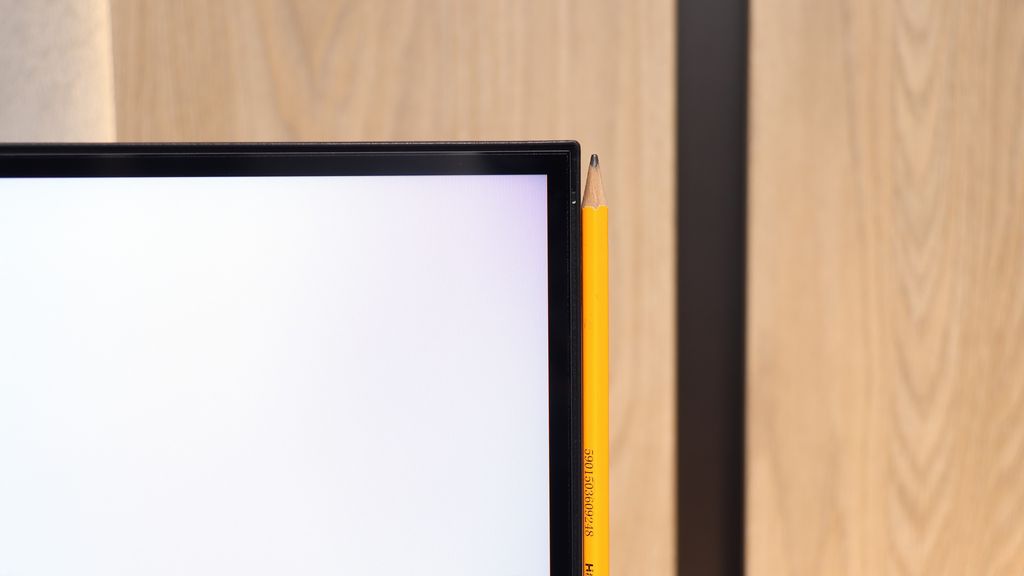
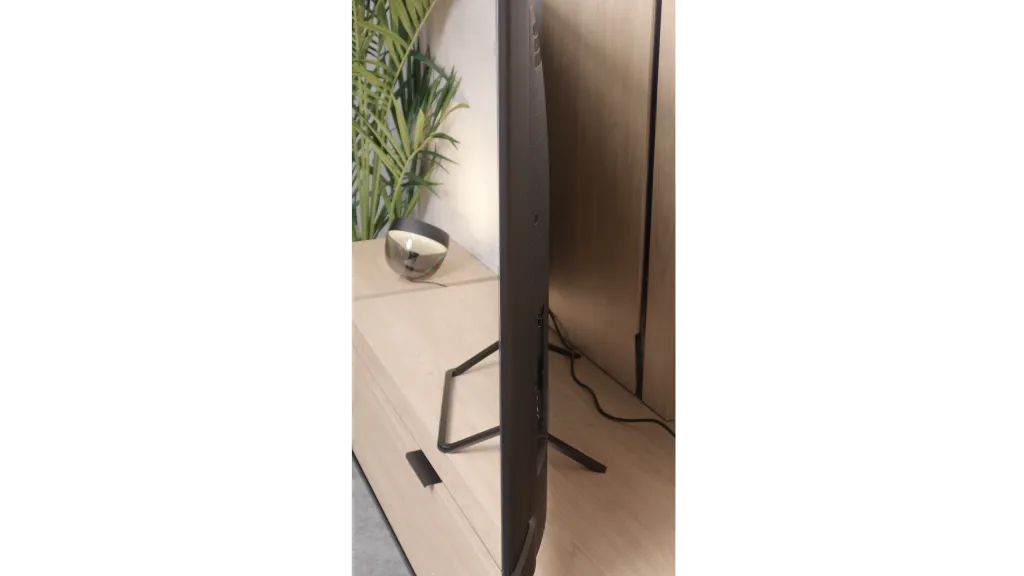
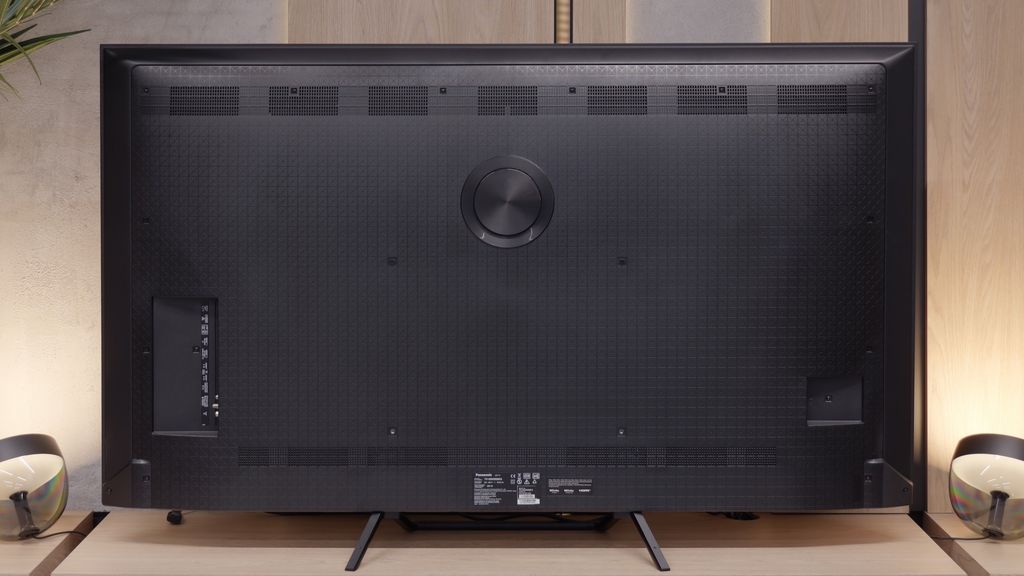
Contrast and black detail
10/10
7.5/10
Local dimming function: Yes, number of zones: 504 (18 x 28)
Contrast:

Result
∞:1

Result
∞:1

Result
∞:1

Result
∞:1

Result
∞:1

Result
175,300:1

Result
28,450:1

Result
19,450:1

Result
8,600:1

Result
5,400:1
Halo effect and black detail visibility:

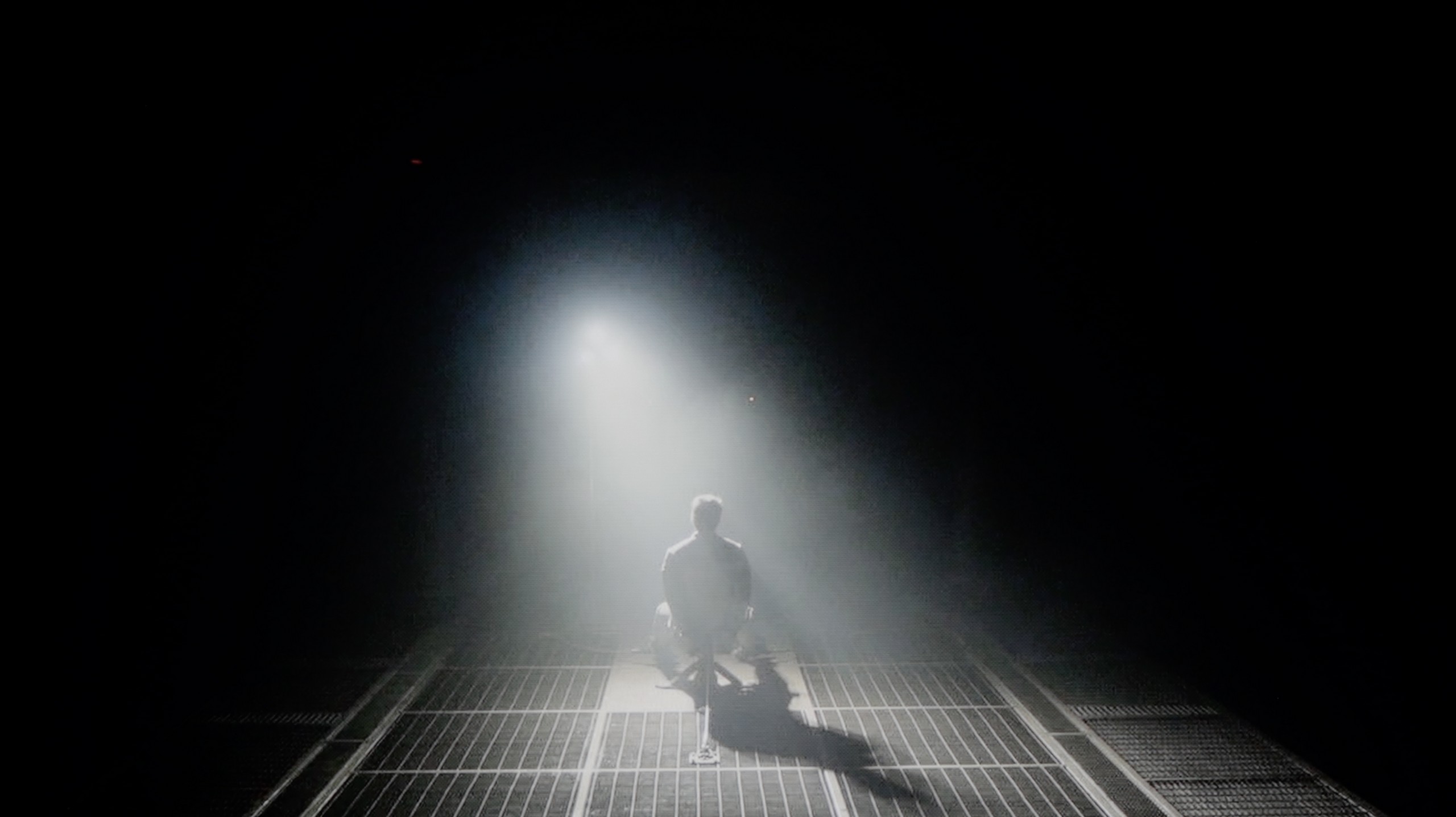
Samsung S85D is a television that truly makes a difference when it comes to picture quality. The blacks are so deep it’s hard to believe, and the contrast makes even the most demanding scenes – like those from the film “Oblivion” – look incredibly lifelike. Thanks to OLED technology, dark areas of the screen are perfectly black, without any unwanted glow or blooming.
It’s worth highlighting that, similar to some variants of the S90D model, the Samsung S85D uses a WOLED panel supplied by LG. This panel is a key element that contributes to the amazing contrast quality, which is particularly noticeable in scenes with high dynamic lighting, making it the perfect choice for lovers of high production quality films and series.
We tested the 65-inch variant, equipped with as many as 504 local dimming zones. The Panasonic W95B is an LCD television with a VA panel, but the most important feature is the use of Mini LED backlighting with precise zone control. The results we achieved are truly impressive – in easier scenes, the contrast can reach six-digit values, making it at times easy to mistake this screen for an OLED. Of course, this model is not an OLED, and in more demanding sequences, certain limitations related to zone performance are visible; however, it must be said that Panasonic has refined its algorithms to near perfection. Local dimming is practically invisible in action – the image remains consistent, without noticeable defects or the effect of excessive "bleeding" of light. Details in dark areas are preserved, and transitions between brightness and black look exceptionally natural.
HDR effect quality
5.7/10
5.7/10
Luminance measurements in HDR:

Result
570 nit

Result
580 nit

Result
666 nit

Result
629 nit

Result
283 nit

Result
1145 nit

Result
229 nit

Result
636 nit

Result
198 nit

Result
740 nit
Scene from the movie “Pan” (about 2800 nits)


Scene from the movie “Billy Lynn” (about 1100 nits)


Static HDR10


Dynamic: HDR10+
Dynamic: Dolby Vision


HDR luminance chart:
Panasonic W95B
HDR luminance
Samsung S85D
HDR luminance
Luminance of RGB colors
Brightness is a key parameter in televisions, and the S85D Samsung model offers a level comparable to other OLEDs from a few years ago. Though it doesn't impress in this regard, its huge advantage is a very competitive price. A peak brightness of 600 nits provides good image quality in HDR conditions, giving users a taste of cinema-like experiences in the comfort of their home. However, as with many budget OLED models, the biggest problem is very bright, full-screen scenes – in such moments, like the final shot from the movie "The Meg," the television can lose as much as half of its brightness, which is noticeable compared to more expensive OLED models. Despite this, the television offers an impressive DCI-P3 colour gamut coverage of 99%, allowing for the display of vibrant and accurate colours.
The Panasonic W95B is truly a bright screen, capable of achieving peak luminance levels of around 1400 nits. In brighter, well-lit movie scenes, this value translates into spectacular HDR effects that can leave a big impression. However, knowing our test setup, you probably see that in very demanding shots – such as the moon in the distance or the lights of a helicopter in a scene from Sicario 2 – the television doesn’t impress. In such situations, brightness drops to around 200 nits, making the HDR effect much less noticeable. This happens because Panasonic focuses on maintaining deep blacks, not illuminating the background – which shouldn’t be a concern for many users. However, it’s important to remember that in such moments, the picture starts to resemble SDR content. The coverage of the colour palette also deserves praise, as it reaches around 93% of the DCI-P3 space thanks to the use of the PFS filter (also known from QLED technology). This means that most films look very good in terms of saturation and colours, maintaining a cinematic quality to the image.
Factory color reproduction
6.6/10
5.1/10


Factory Mode
After calibration


Factory Mode
After calibration
The Filmmaker mode on Samsung's S85D does indeed offer the best factory settings, but it is not without flaws, particularly evident in colour reproduction. The white balance graph for HD and HDR content shows clear issues – both red and blue colours are significantly weakened, leading to a dominance of green. The result is an unnatural yellowish tint that can affect the perception of realistic scenes. The Color Checker test clearly shows that the colour samples deviate from the expected values – for HD materials, the colours tend to be overly saturated, with a marked shift towards green, which is also evident in the white balance graph. Conversely, for 4K HDR content, the colours appear too dull and lacking in depth, causing the image to lose its appeal and naturalness. This effect is particularly noticeable in delicate scenes where colour precision plays a key role, which can be disappointing for discerning viewers who expect faithful reproduction of details and colour intensity.
When it comes to brightness, the gamma graph for HD content looks quite good; however, there is a clear spike at the end, exceeding the value of 2.4. Although this is not a major issue in most scenes, in more demanding sequences it can affect the clarity of bright details. For 4K content, the EOTF curve, responsible for rendering brightness, proves to be problematic. The initial part of the graph shows a slight spike. This phenomenon can result in excessive boosting of brightness in the brightest areas of the image, leading to a loss of detail in very bright scenes.
Although Samsung S85D offers quite decent factory settings, especially in Filmmaker mode, it is worth considering manual adjustment of settings to improve some imperfections, particularly in colour reproduction.
In Filmmaker mode, the Panasonic W95B offers an image with quite accurate colour reproduction, although it is not without minor imperfections. The white balance slightly leans towards red, which can cause a subtle warm tint to the image, and the gamma curve is slightly elevated, making the screen appear a bit brighter. It's good that the manufacturer has included this mode – even in its factory configuration, it provides a fairly natural look for films. However, knowing how susceptible Panasonic televisions are to calibration, we decided to check how much the image could be improved after professional tuning.
Color reproduction after calibration
8.7/10
9.1/10




After calibration, the Filmmaker mode on Samsung S85D really impressed. The white balance, regardless of the type of content, has improved significantly, resulting in more natural colours. The Color Checker test shows that colour reproduction errors are now minimal and rarely exceed acceptable values, which indicates precise colour reproduction. The factory colour representation left a lot to be desired, but now the situation has significantly improved – colours are natural, accurate, and look as if they have been precisely rendered according to the creators' intentions. This is a huge step forward compared to earlier generations, where colours were often distorted or too intense.
The brightness characteristics have also benefited from calibration – it's now more vivid and precise. The gamma, although reasonably good before, has become even more stable, providing a deeper, more natural image. The EOTF curve has been flattened, allowing details in dark areas to be more visible, and the contrast is better balanced. Thanks to all these improvements, the television delivers an image close to reference quality, which definitely enhances the enjoyment of watching films and HDR content.
After professional calibration, the Panasonic W95B shows what it’s really capable of. Colour errors have mostly dropped below values of 2–3, making them practically invisible to the human eye. The excess red in the white balance has also been corrected, which means the image is no longer slightly tinted pink, and details in dark areas no longer get lost due to excessive dimming in the gamma. The improvement in HDR content is also noticeable – colour saturation is now more stable and doesn’t lean towards blue as distinctly as it did before. It’s truly a fantastic television for watching movies and series in the highest possible quality. While we know that Mini LED screens are not always perfectly suited for this, the W95B is a prime example that with proper tuning, a result close to OLEDs can be achieved.
Smoothness of tonal transitions
7.2/10
9.5/10












Samsung OLED S85D handles tonal transitions very well. There are no major issues, and transitions between different colour levels are smooth and natural. The only minor drawback is slight problems around the reds, where in some scenes, you can notice a bit of interference. Nevertheless, the overall effect is very positive – the television performs excellently with most material.
In terms of tonal transition fluidity, the Panasonic W95B performs exceptionally well. In the vast majority of scenes, the gradation is practically unnoticeable, which makes the image look exceptionally smooth and natural. Minimal issues only arise in extreme shades of grey, which occur extremely rarely and are difficult to catch with the naked eye. This is a level that will satisfy even the most demanding users.
Image scaling and smoothness of tonal transitions
7.4/10
7.8/10
Smooth transition function


Image without overscan on the SD signal


Samsung S85D does a great job of scaling images and smoothing tonal transitions. Like other Samsung models, the television offers three noise reduction modes: off, standard, and high. While it improves gradation well, it unfortunately also removes film grain, which many viewers desire to give the image a cinematic character. This grain often adds authenticity and a certain rawness to films that is lost once it is smoothed out. Removing the grain can make the image appear too sterile and smooth, which takes away some of the charm of the original film material. When it comes to image scaling, the Samsung S85D excels at displaying lower resolution content – the model in the photo and the branches in the background were shown correctly, without major issues with jagged edges. The only noticeable downside is the presence of overscan, which can sometimes cut off parts of the image, which may not appeal to everyone.
In terms of image processing, the Panasonic W95B performs exceptionally well. The proprietary processor responsible for digital image processing effectively upscales lower resolution content to 4K, maintaining a high level of detail and a natural look to contours. The end result is impressive – the upscaling is truly top-notch, and Full HD content can look surprisingly good. Also noteworthy is how the TV smooths tonal transitions in low-quality materials. The algorithm doesn’t operate as aggressively as in some competing models, which helps avoid the loss of detail or the blurring of film grain.
Blur and motion smoothness
8.5/10
7.8/10

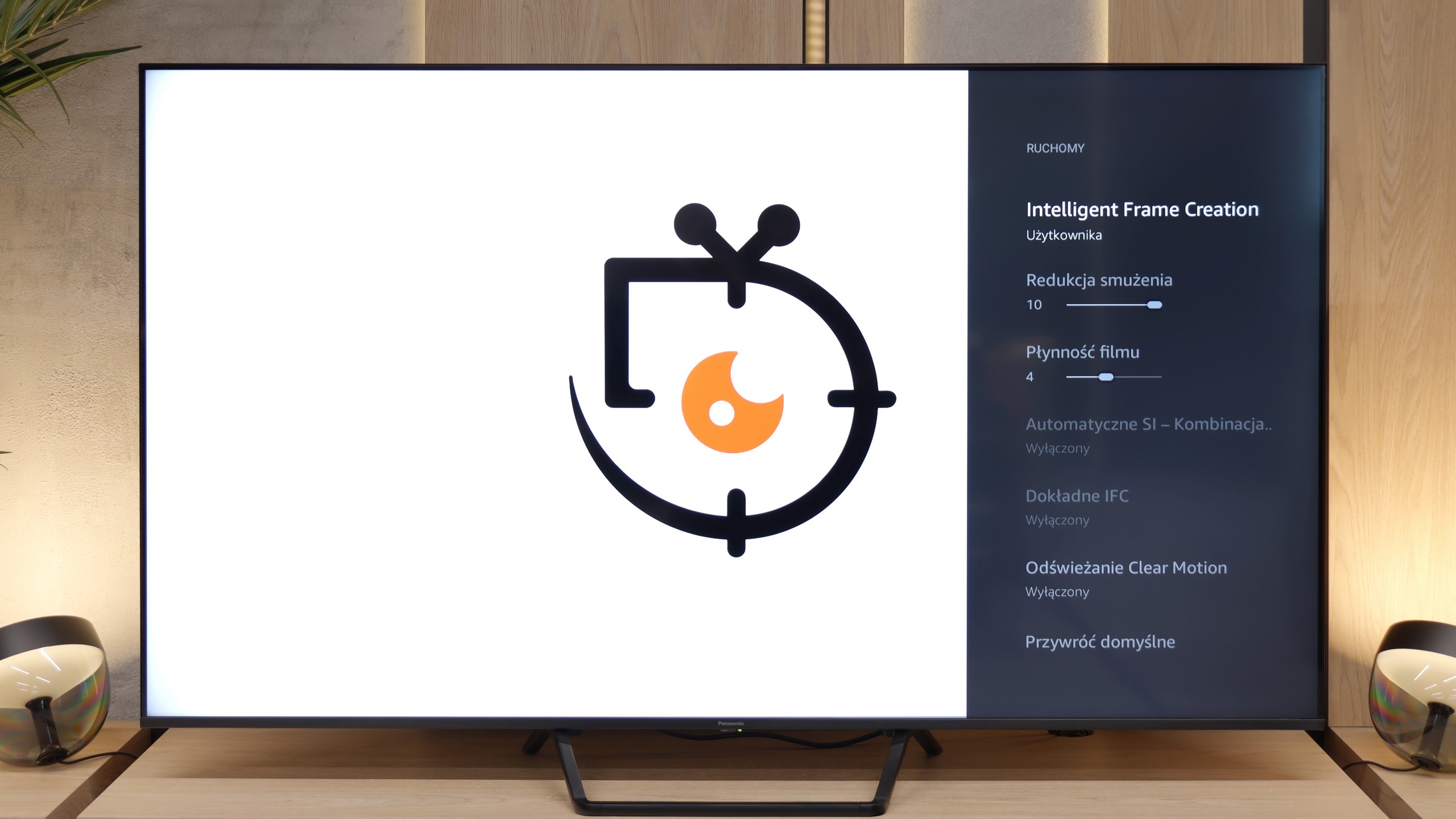
Blur (native resolution, maximum refresh rate):






Blur (BFI function enabled):
Image flickers in this mode



Blur ():
Blur (4K@144Hz):



As befits an OLED television, Samsung S85D offers excellent motion fluidity. Equipped with a 120 Hz panel and a fast response time, the TV delivers very smooth playback of dynamic scenes without visible blurring. For movie enthusiasts, there is a feature called "Picture Clarity Settings," which allows for adjusting the image smoothness to individual preferences on a 10-point scale. Motion blur reduction enhances the sharpness of fast-moving objects, while motion smoothing eliminates the "judder" effect for a smoother motion. This way, every user can set the appropriate level of clarity that best suits their taste, from a more cinematic effect to clearer, smoother movements.
The 144 Hz panel used in the Panasonic W95B offers excellent smoothness, although in practice, given how television content looks or how new-generation consoles are limited, it’s worth looking at its performance when refreshing at 120 Hz. In this mode, the television performs exceptionally well – despite being a VA panel, which is not known for the fastest pixel response times, motion blur is minimal and difficult to detect with the naked eye.
Console compatibility and gaming features
9.5/10
9.8/10
- ALLM
- VRR
- VRR range48 - 120Hz48 - 144Hz
- Dolby Vision Game Mode
- Correct implementation of HGIG
- 1080p@120Hz
- 1440p@120Hz
- 4K@120Hz
- Game bar

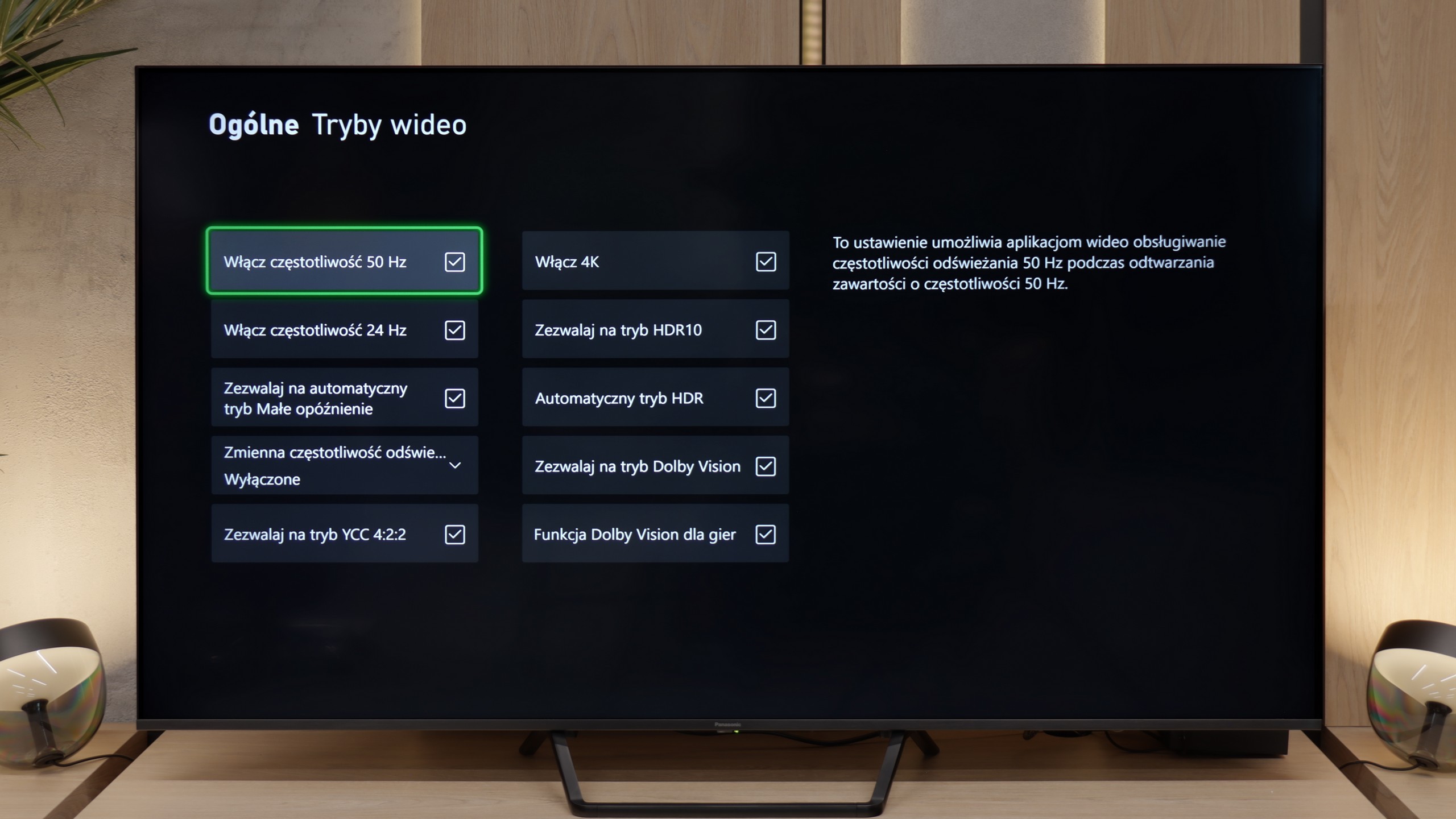

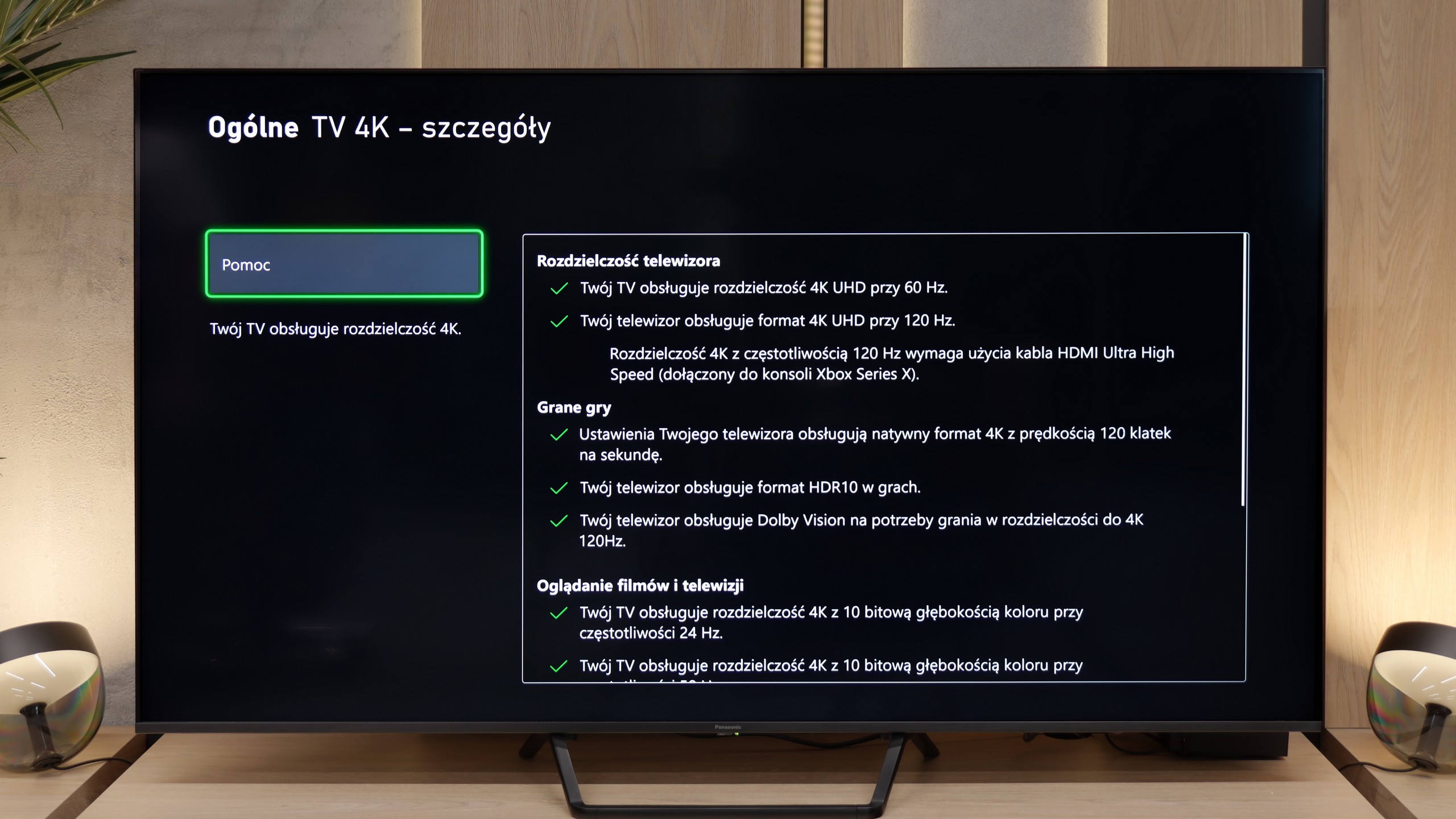

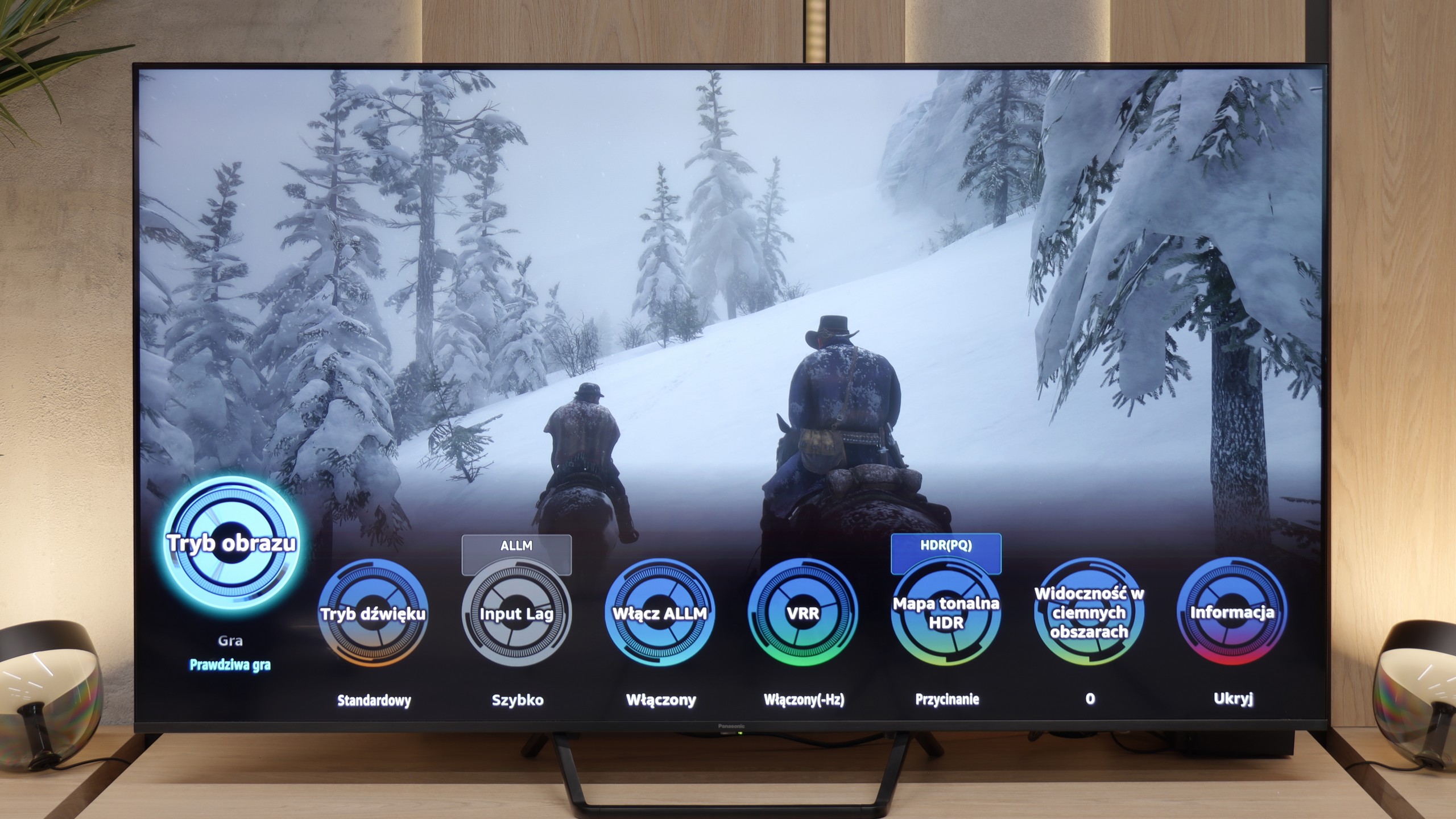

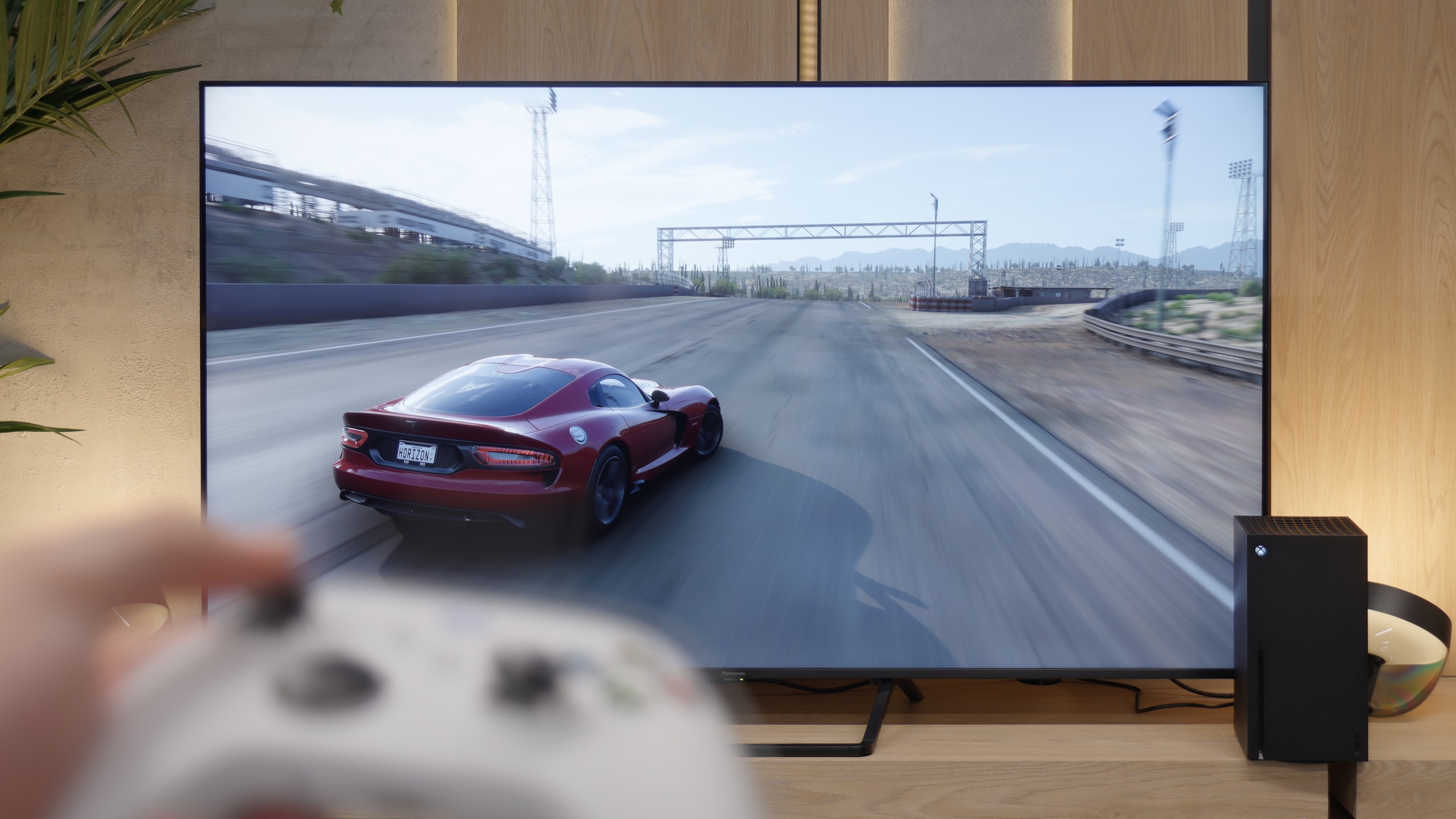
Samsung S85D OLED is an excellent choice for gamers thanks to its many modern features that make gameplay easier and more enjoyable. The TV has four full-bandwidth HDMI 2.1 ports, allowing you to connect the latest consoles without worrying about limitations in image quality or frame rates. This means support for 4K resolution at 120 Hz, which is ideal for modern titles. Additionally, the Samsung S85D has an ALLM (Auto Low Latency Mode) feature that automatically activates low latency mode when it detects a gaming device. This means you don’t have to manually switch settings – the TV takes care of ensuring fast response times, which is crucial in games where every second counts.
The VRR (Variable Refresh Rate) feature and G-Sync support are additional elements that make gameplay smoother. VRR adjusts the refresh rate to match the frame rate generated by the console or computer, eliminating screen tearing and stuttering. This is especially useful in fast-paced games where the frame rate can fluctuate. Auto Motion Plus Game is a feature that Samsung introduced with gamers in mind, and it’s worth appreciating. It makes the picture in games smoother – 30 frames per second looks like 45, and 60 Hz gains in smoothness, giving an effect close to 90 Hz. At the same time, there’s no significant increase in input lag, which remains below 25 ms, making this feature stand out compared to others available on the market. Gamers can enjoy smoother visuals without worrying about reduced responsiveness.
Samsung has also thought of something extra – the TV has a built-in Xbox Game Pass app, which means you can game in the cloud without needing a console. It’s a great solution for those who want to enjoy gaming without investing in additional hardware. All you need is an internet connection, and you have a massive library of games at your fingertips. This makes Samsung S85D an excellent choice for both casual and more advanced gamers.
Aside from the previously mentioned issue related to VRR mode, where local dimming does not work, the Panasonic W95B is a true gaming beast. The TV offers practically everything that gamers could expect – perhaps apart from four HDMI 2.1 ports, as there are only two available. On board, we find automatic low latency mode (ALLM), correctly implemented HDR modes for gamers, including HGiG, as well as support for Dolby Vision in games. The whole package is complemented by an interestingly designed Game Bar, presented in the form of circles. It may not be the most visually attractive, but it fulfills its purpose – allowing quick access to key game parameters and adjusting settings without diving into the system menu.
Input lag
9.9/10
9.8/10
SDR
HDR
Dolby Vision
Samsung S85D achieves excellent results in terms of input lag, regardless of refresh rate or resolution. This means that the screen responses are nearly instantaneous, which is particularly important in fast-paced, dynamic games. Gamers can rely on the TV's lightning-fast response to controller movements, providing an edge in competition and greater satisfaction in gameplay. Low input lag is a definite advantage of this model, making the Samsung S85D OLED an ideal choice for gaming enthusiasts.
Panasonic W95B offers very low input lag – around 11 ms at 120 Hz content and 20 ms at 60 Hz. While these aren't record-breaking results that would impress the most demanding esports players on paper, in practice the difference is virtually imperceptible. During testing, even in dynamic, fast-paced titles we didn’t notice any response delays. The TV responds instantly, and gameplay remains smooth and comfortable. This level is more than sufficient for both console gaming and more demanding online productions.
Compatibility with PC
7.6/10
8.4/10

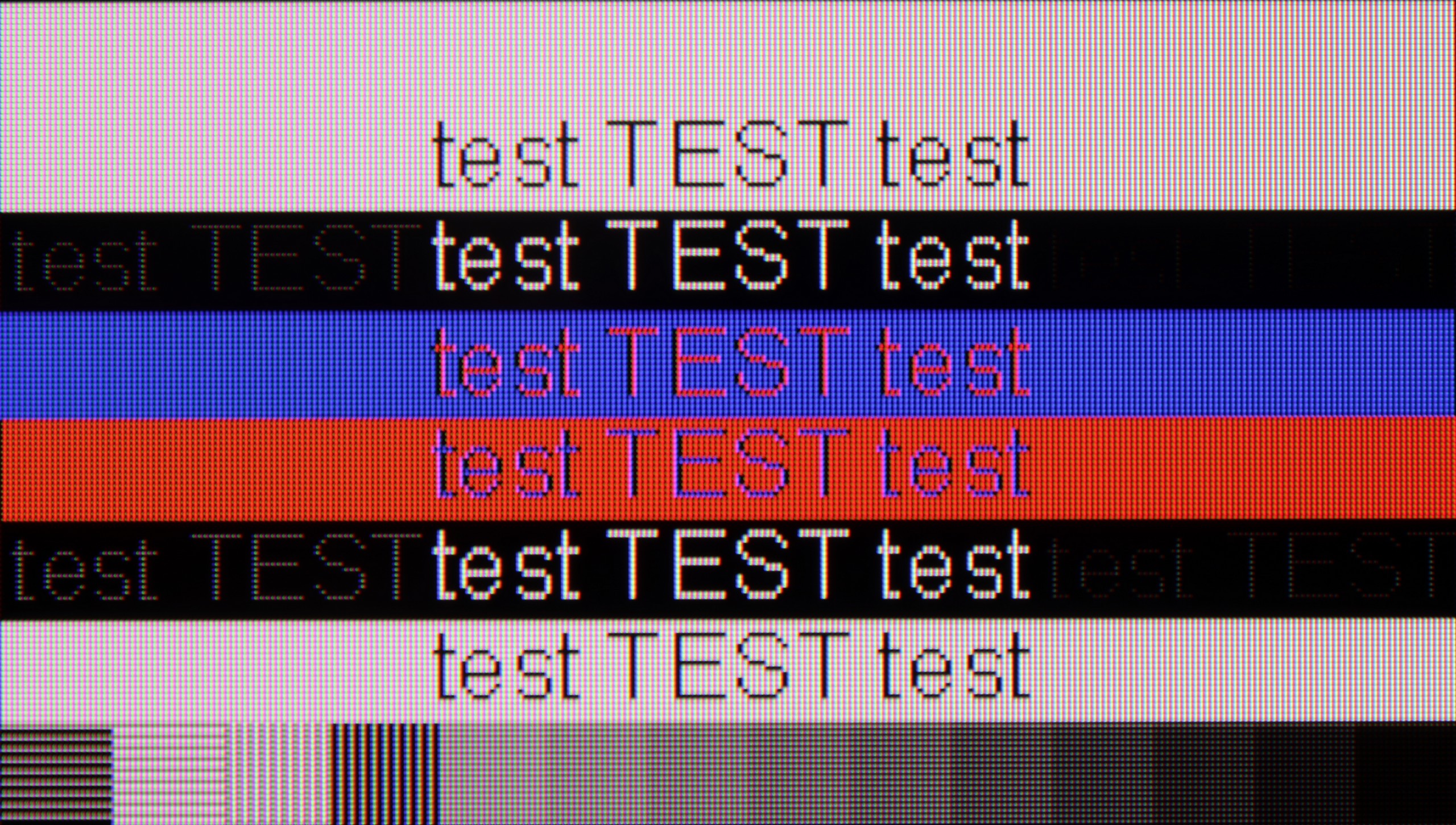
Samsung S85D performs very well as a computer monitor. With clear visibility of text, regardless of the background type, using it is convenient and comfortable. Chroma 4:4:4 support ensures precise reproduction of text and graphics, which is essential for office work, browsing the internet, or editing documents. Samsung S85D is a versatile television that easily serves as a monitor for everyday use. We deducted 0.4 points for the WRGB layout, as is common with every television with such a sub-pixel arrangement.
The Panasonic W95B performs very well when connected to a computer. With its gaming monitor featuring a 144 Hz refresh rate and support for G-Sync and AMD FreeSync, the screen delivers smooth visuals without frame tearing, which will be appreciated not only by gamers but also by those using the TV as a large monitor. It can also be comfortably used for daily work – fonts are legible, and the image is sharp. While they may not be as clear as those from IPS panels, the display quality for text will be fully satisfactory for most users.
Viewing angles
7.5/10
2.9/10
The viewing angles on the Samsung S85D are excellent, as expected from OLED. The picture remains crisp and doesn't lose quality even when watched at a wide angle, making the TV perfect for larger rooms and shared viewing with family or friends. The only TVs that offer better viewing angles are those with QD-OLED organic matrices or MLA OLED.
Unfortunately, this is the Achilles heel of the Panasonic W95B model – as with most TVs equipped with a VA panel without additional coatings to widen viewing angles. Colours start to fade with even a slight deviation from the screen axis, and the contrast noticeably drops. For this reason, when watching, it’s best to sit directly in front of the television to fully utilise the image's potential.
Daytime performance
5/10
7.2/10

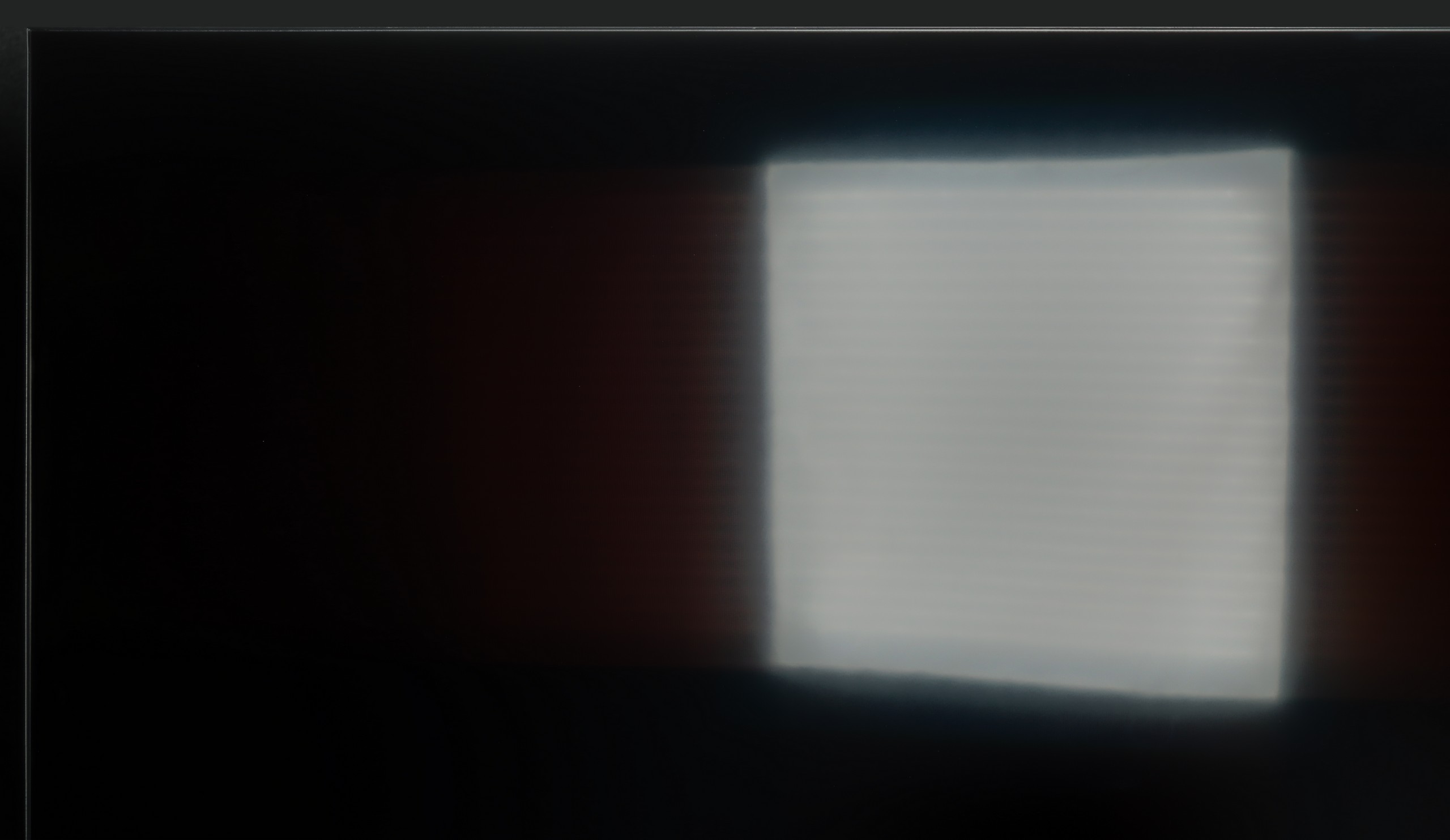


Panel brightness
Average luminance SDR
Panasonic W95B: 673 cd/m2
Samsung S85D: 313 cd/m2
Samsung S85D performs quite well with reflections thanks to the matte screen's satin finish, which effectively dampens them. Unfortunately, the SDR brightness of 310 nits is rather average, meaning the TV's effectiveness may be limited in very bright rooms. It’s not an impressive result, so this model will definitely perform better during evening viewing when such brightness will be sufficient. During the day, to achieve better comfort, it may be necessary to draw the blinds or curtains.
The satin coating applied in the Panasonic W95B effectively reduces light reflections, ensuring that the screen remains readable even in brightly lit rooms. However, the greatest advantage of this model is its high brightness – when watching everyday content, it reaches around 700 nits, which is more than sufficient even in very demanding daylight conditions. The television performs excellently in living rooms with large windows or when watching on a sunny day, maintaining appropriate contrast and colour saturation without sacrificing visual comfort.
Panel details
Subpixel Structure:

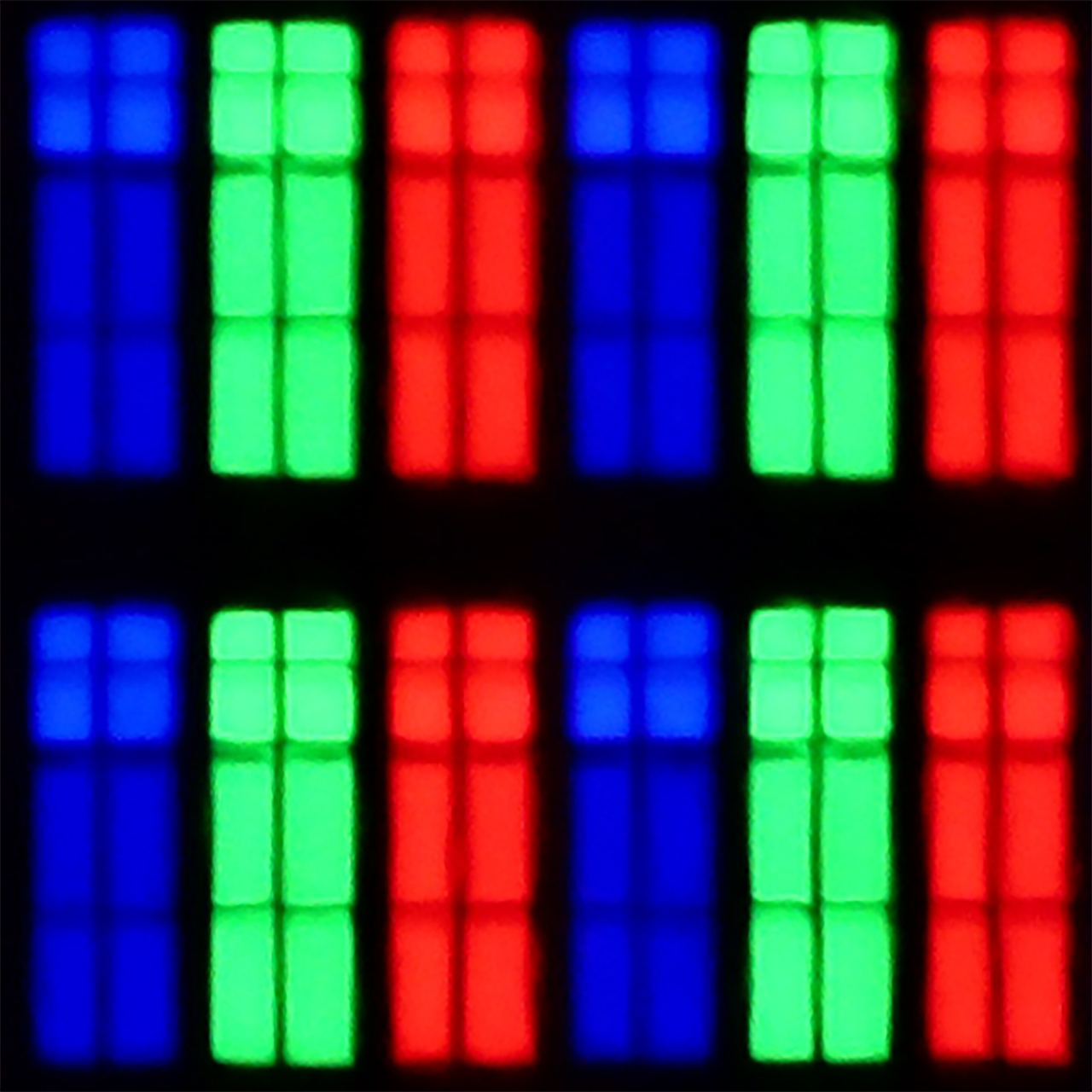
Panel uniformity and thermal imaging:


Samsung S85D
Panasonic W95B
TV features
7.2/10
6.8/10
- HDMI inputs0 x HDMI 2.0, 4 x HDMI 2.1 48Gbps2 x HDMI 2.0, 2 x HDMI 2.1 48Gbps
- OutputsToslink (Optical audio), eARC (HDMI), ARC (HDMI)Toslink (Optical audio), eARC (HDMI), ARC (HDMI), Mini-Jack (Headphones)
- Network InterfacesWi-Fi 2.4GHz, Wi-Fi 5GHz, Ethernet (LAN) 100MbpsWi-Fi 2.4GHz, Wi-Fi 5GHz, Ethernet (LAN) 100Mbps
- TV receptionDVB-T, DVB-T2, DVB-S, DVB-S2, DVB-CDVB-T, DVB-T2, DVB-S, DVB-S2, DVB-C
Classic features:
- Recording to USB (terrestrial TV)
- Recording programming
- Picture in Picture (PiP)
- RF remote control (no need to aim at the screen)
- Backlit remote control
- Teletext
- Audio only mode
- Bluetooth headphones support
- Simultaneous Bluetooth headphones & TV audio
Smart features:
- AirPlay
- Screen mirroring (Windows Miracast)
- Voice search
- Voice search in native language
- Ability to connect a keyboard and mouse




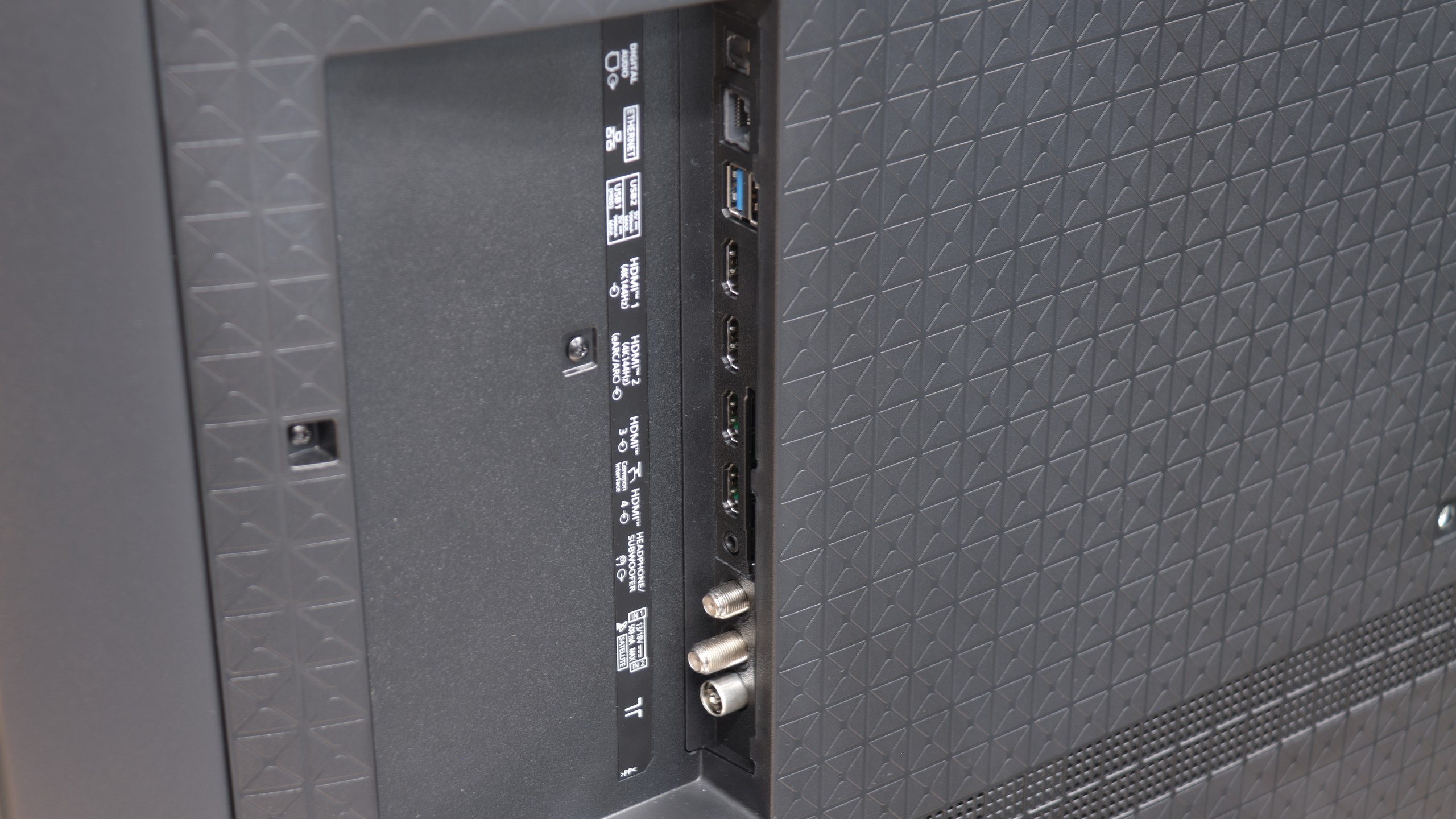
Samsung S85D runs on the Tizen operating system, which is intuitive and provides easy access to many apps and streaming services. The system offers smooth and quick navigation, significantly improving the comfort of using the television. The TV is equipped with a solar-powered remote control, which allows for the control of other devices, such as set-top boxes or home theatre systems, enabling the operation of all home equipment with one device. In terms of connectivity, the Samsung S85D supports AirPlay, making it easier to stream content from Apple devices, and it has a built-in Bluetooth module that enables the connection of peripheral devices, such as keyboards, headphones or speakers.
When it comes to everyday use of the television for regular TV shows, the S85D model offers several useful features but also has some drawbacks. One of its advantages is the PIP (Picture-in-Picture) function, which allows for simultaneous viewing of two contents – for example, a match in a small window while the rest of the screen shows a favourite series. This is a convenient solution for those who want to stay up-to-date with various programs. However, it is disappointing that there is no recording capability from the built-in tuners. This limitation makes it impossible to save favourite programs or movies for later, which can be a problem for those who want to flexibly adjust their TV watching to their schedule - however, we believe that the absence of this feature is becoming less of a burden, as users now have wide access to various content online, making the need for recording less significant.
The design of the OLED Samsung S85D stands out with its distinctive, rounded shape at the back, setting it apart from most OLED televisions that typically have a flat back. This unusual design gives it a unique look and attracts attention, making the television appear modern and elegant. The package includes a remote control, a CI+ module, a stand in the form of two feet, and a power cable, allowing for a quick and convenient start to using the television without the need to purchase additional accessories.
SmartTV Features W95B
Unfortunately, this is yet another Achilles' heel of the Panasonic W95B model. The Fire TV operating system used here in its European version is poorly refined – it lacks many key applications, and the interface operates sluggishly and clumsily in places. While it does have basic features like AirPlay and Screen Mirroring, it's a poor consolation compared to how smoothly platforms from other manufacturers operate. As a result, despite the excellent picture quality, the television falls short of expectations in terms of software.
User Features W95B
In terms of user features, the Panasonic W95B performs much better. The television offers Bluetooth, a classic well-equipped remote control, and the ability to record programs to USB from built-in terrestrial TV tuners – a rarity that many competing models lack. An additional advantage is the presence of a headphone jack, which will certainly please users of older home cinema systems or traditional wired headphones. In terms of hardware equipment, the W95B is therefore a solid and complete television.
Playing files from USB
9.1/10
3.1/10
Supported photo formats:
Maximum photo resolution:

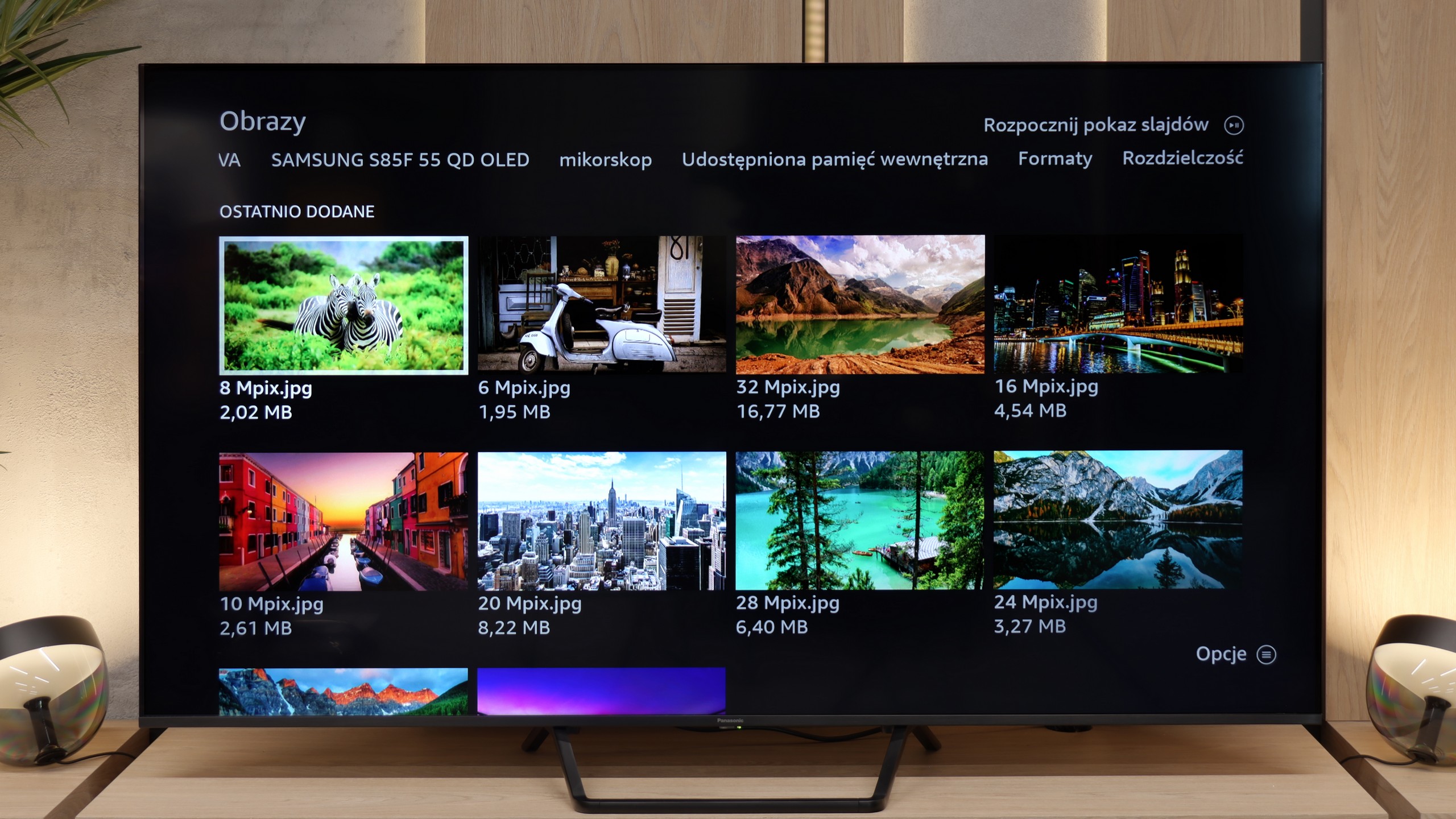
Playing multimedia files on Samsung S85D will satisfy most users. The television offers wide compatibility with popular video, audio, and image file formats, providing smooth playback from both USB media and local networks. The built-in media player operates efficiently and is easy to use, although there may be issues with some less common formats.
This is another issue with the Fire TV system used in the Panasonic W95B. If someone has their own movie library and plans to play them directly from a USB drive or external hard drive, they may be disappointed. The TV handles displaying photos, like from holidays, reasonably well, but video playback is quite limited. The biggest problem is the lack of subtitle display when playing movies from USB. Therefore, if you care about watching files from your own collection, it's definitely better to use an external media player.
Apps
8.7/10
7.2/10














































Sound
7/10
7.9/10
- Maximum volume-82dB
- Dolby Digital Plus 7.1
- Dolby True HD 7.1
- Dolby Atmos in Dolby Digital Plus (JOC)
- Dolby Atmos in Dolby True HD
- DTS:X in DTS-HD MA
- DTS-HD Master Audio
Samsung S85D OLED offers quite decent sound, even though the built-in speaker system is not particularly impressive (2x10W). The television supports Dolby Atmos technology, which provides spatial sound, however, it does not support the DTS format. The sound is clear and sufficient for everyday use, although for more demanding users it may be advisable to connect an external audio system for a fuller and more dynamic sound.
The Panasonic W95B performs surprisingly well for a television. The sound is clear and spacious, and thanks to the subwoofer located at the back, you can even hear a slightly perceptible bass, which is not often found in TVs of this class. The overall sound quality is at a very high level, allowing for comfortable viewing of movies and series without the need to connect an external audio system. Of course, as is well known, if someone wants to watch truly high-quality, it’s worth connecting a soundbar – especially since the Panasonic W95B supports Dolby Atmos format, which allows it to transmit spatial sound without any issues. The only thing missing is support for the less popular DTS:X format, which simply isn’t available in this model.
Sound Quality Test
No sound test video
Acoustic Measurements
No acoustic data
82dBC (Max)
75dBC
